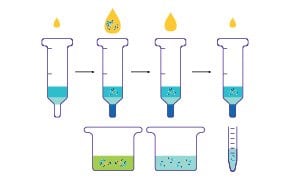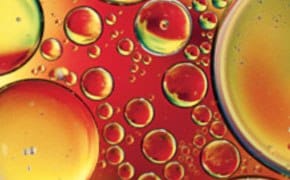Protein Purification

Numerous protein purification methods are widely used in both biological and biomedical research. Recombinant protein expression and purification workflows depend on many variables. These variables include but are not limited to the physical properties and biological function of the protein, and whether a bacterial or eukaryotic cell line should be used to express the protein of interest. Significant advancements have been made in the area of recombinant protein expression and purification methodology along with a plethora of commercially available systems and kits. However, proteins are complex macromolecules, and optimal protein expression and purification strategies must be determined empirically.
Featured Categories
Our extensive portfolio of high-purity biological buffers in various formulation and packaging formats provide superior solution stability and pH control throughout your bioprocess workflow applications.
Biological detergents and surfactants, including REACH-compliant biodegradable alternatives, are available for cell lysis, DNA/RNA electrophoresis, Western blotting, transfection, and many other life science research applications.
Critical Factors for Protein Purification
Protein structure and function are often critical factors to consider when selecting a protein purification strategy. Recombinant protein biochemical or biological activity is partially determined by discrete domains within the protein, of which are often reliant on the protein being folded into secondary, tertiary, and quaternary structures.
Protein folding is collectively referred to as the higher-order structure (HOS) and is essential for the correct three-dimensional shape and function of the protein. Additionally, protein solubility is a highly desirable attribute for successful protein purification and is influenced by numerous factors including, size and N- and C-terminal elements. Recombinant proteins commonly incorporate N- and C-terminal tags, which are small sequences that are used for immunohistochemical detection and purification, or protein affinity chromatography, depending on the specific N- and C-terminal tag and intended downstream application.
Protein Purification Methods and Applications
Whether researchers aim to study protein function or seek to scale up protein purification using strategies for downstream, industrial-scale biologics and pharmaceutical production, there are numerous protein purification methods, reagents, and tools available. The selected protein purification method will partially determine the sample preparation workflow. Affinity chromatography is a suitable initial purification step for purifying solubilized recombinant proteins that contain relevant tags; however, unwanted proteins are likely to also bind to the affinity resin column and will elute in the final wash along with the desired protein of interest. If additional purification is necessary, supplementary purification strategies are employed including, size-exclusion chromatography or ion exchange chromatography. Importantly, many affinity tags can be removed as researchers may want to remove any non-native sequences from the final purified protein.
Visit our document search for data sheets, certificates and technical documentation.
Related Articles
- Protocol for immunoprecipitation (IP) of FLAG fusion proteins using M2 monoclonal antibody 4% agarose affinity gels
- This page shows how to perform sample desalting, buffer exchange and concentration for affinity chromatography of tagged proteins.
- This page shows how to solubilize membrane proteins with products from Cytiva.
- This page describes efficient column packing and preparation for affinity chromatography of tagged proteins using Cytiva products.
- This page covers the use of Sepharose Fast Flow for purification of proteins.
- See All (18)
Related Protocols
- Reduce plastic waste and eliminate hazardous liquid waste for more sustainable laboratories with GenElute™-E Single Spin DNA and RNA prep kits.
- How to optimize purification of histidine-tagged proteins using Cytiva products.
- How to separate proteins and peptides with affinity for metal ions by immobilized metal chelate affinity chromatography.
- His GraviTrap™ TALON® columns are prepacked with 1 ml of TALON® Superflow medium. Each column provides simple manual purification of up to 15 mg of histidine-tagged proteins.
- This page discusses column packing and preparation techniques for reverse phase chromatography.
- See All (4)
Find More Articles and Protocols
How Can We Help
In case of any questions, please submit a customer support request
or talk to our customer service team:
Email custserv@sial.com
or call +1 (800) 244-1173
Additional Support
- Calculators & Apps
Web Toolbox - science research tools and resources for analytical chemistry, life science, chemical synthesis and materials science.
- Customer Support Request
Customer support including help with orders, products, accounts, and website technical issues.
- FAQ
Explore our Frequently Asked Questions for answers to commonly asked questions about our products and services.
To continue reading please sign in or create an account.
Don't Have An Account?

